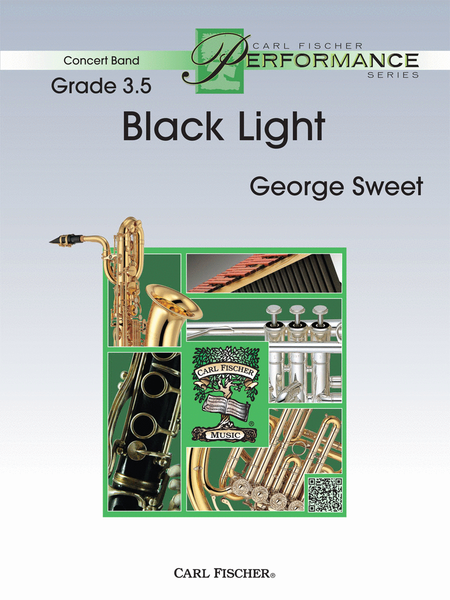Black Light
-
Ships in 1 to 2 weeks
Details
Description
SKU: CF.CPS228
Composed by George Sweet. Concert Band (CPS). Set of Score and Parts. With Standard notation. 8+8+4+8+16+16+4+4+4+4+4+4+8+8+8+4+4+6+6+6+8+1+2+2+2+2+4+8+2+28+4 pages. Duration 4 minutes, 35 seconds. Carl Fischer Music #CPS228. Published by Carl Fischer Music (CF.CPS228).ISBN 9781491152546. UPC: 680160910045.
Black light is defined as infrared or ultraviolet light which is invisible to the naked eye. The idea of an entire spectra existing out of the range of human perception was a large influencing factor for George Sweet in the composition of this piece. Richly scored for the modern concert band, Black Light is written in a post-minimalist style and is also heavily influenced by the work of American composers Steve Reich, John Adams, and Philip Glass.
Black light is defined as infrared or ultraviolet light which is invisible to the naked eye. The idea of an entire spectra existing out of the range of human perception was an influencing factor on the composition of the piece. Black Light is written in a post-minimalist style and is also heavily influenced by the work of American composers Steve Reich, John Adams, and Philip Glass.This begins with strict motor accompaniment. Take care to maintain equal balance among the different “moving parts” so that they blend to create a solid whole both here and throughout the piece. The primary thematic material is stated by the trumpets and horns at m. 12. This material is the basis for much of the harmonic and thematic material that follows. A slightly varied statement of the main theme is presented again at m. 26 with a different type of motor accompaniment. This leads to a B-section at m. 44, which is a bold fanfare-like presentation of the main material. Another series of variations on the main theme begins at m. 50 and incorporates many different textural and harmonic ideas in the accompaniment. Once again, be careful to not let any one “moving part” overwhelm another and keep the texture evenly balanced. A second, broader presentation of the B-section occurs at m. 90 and leads to a subdued C-section at m. 100 with new melodic material presented in the trumpet. A whimsical march-like section pushes to the return of the introductory motor material at m. 131. A final heroic presentation of the main thematic material results in a somewhat ambiguous coda, which brings the piece to a dramatic conclusion.

 Share
Share